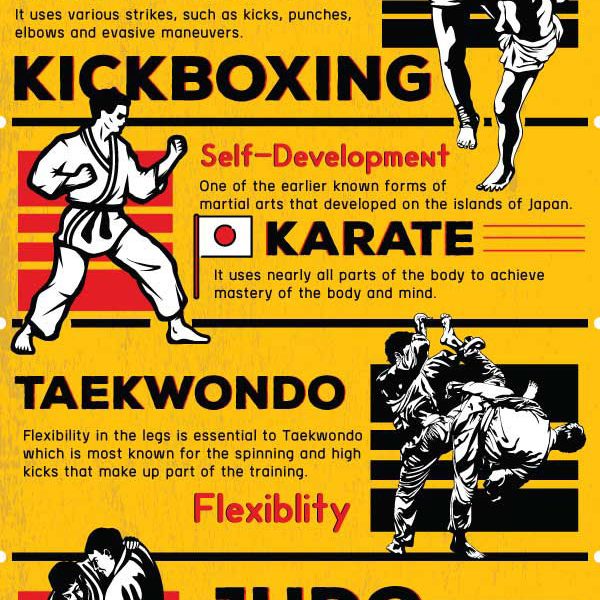Discovering The Rich Heritage And Spiritual Dimension Of Fighting Style: A Detailed Exam
Discovering The Rich Heritage And Spiritual Dimension Of Fighting Style: A Detailed Exam
Blog Article
Web Content Writer-Ryberg Martin
Enter the ancient world where martial arts were substantiated of necessity in diverse regions. Societies crafted distinct fighting designs intertwined with historic contexts. Methods developed over centuries through devoted technique and cultural exchanges. Today, modern martial arts mix standard components for maximum performance. Philosophically, martial arts highlight self-control, self-improvement, and harmony. Regard, humbleness, and equilibrium are fundamental principles directing professionals in the direction of growth and durability. Discover the midsts of this rich history and ideology to reveal the extensive influences shaping this long-lasting discipline.
Beginnings of Martial Arts
Fighting style came from different regions all over the world, progressing as useful battle systems to prevent threats. These old fighting designs were developed out of requirement, with each society crafting techniques matched to their special atmospheres and challenges. From the grappling arts of Jujutsu in Japan to the striking strategies of Martial art in China, martial arts were deeply linked with the historical, social, and cultural textile of their respective societies.
In Japan, the samurai course polished martial arts like Kenjutsu, the art of the sword, which later progressed into the a lot more promoted type of Kendo. On the other hand, in Brazil, Capoeira became a blend of dancing and battle, produced by enslaved Africans as a way to resist fascism. Each martial art lugs with it a rich background and viewpoint, reflecting the worths and ideas of individuals that practiced them.
As you explore the beginnings of martial arts, you discover a tapestry of human resourcefulness, resilience, and the stubborn spirit of warriors throughout time.
Advancement of Strategies
With centuries of technique and improvement, fight methods within different martial arts have undertaken an extensive advancement. From ancient styles like Martial art and Karate to a lot more modern disciplines such as Brazilian Jiu-Jitsu and Krav Maga, the development of methods has actually been driven by a mix of cultural influences, practical applications, and technical advancements.
One considerable element of this advancement is the cross-pollination of strategies in between various martial arts. For example, methods from traditional Japanese Jiu-Jitsu were integrated into the creation of Judo by Jigoro Kano in the late 19th century. This mixing of designs has actually caused the development of hybrid martial arts like Mixed Martial Arts (MMA), which incorporate elements of striking, grappling, and submission techniques.
Moreover, the development of methods has actually been formed by the boosting focus on effectiveness and performance in battle. Specialists have continually looked for to improve their strategies via strenuous training, experimentation, and competition, leading to the development of highly specialized and reliable fighting designs. Generally, the development of methods in martial arts reflects the vibrant nature of battle and the recurring mission for enhancement and development.
Thoughtful Foundations
Discovering the underlying thoughtful principles of martial arts gives insight right into their core worths and assisting beliefs. At the heart of lots of martial arts self-controls is the idea of self-control itself. By educating your mind and body to work as one natural unit, you cultivate self-control that expands past the dojo or health club right into everyday life. This technique incorporates respect, humbleness, and self-constraint, forming not simply your physical abilities yet also your personality.
first true mixed martial arts in martial arts is the idea of continual self-improvement. read on of understanding a fighting style is continuous, with specialists regularly striving to better themselves, both literally and emotionally. This focus on growth cultivates resilience, determination, and a growth attitude that can be related to all elements of life.
In addition, martial arts emphasize the value of harmony and equilibrium. Techniques are designed to use a challenger's power against them, highlighting the concept of yielding and rerouting pressure instead of satisfying it head-on. This philosophy extends to interpersonal connections, promoting peaceful resolutions and mutual understanding. By accepting these philosophical structures, martial musicians not just improve their battle abilities however likewise grow a lifestyle fixated individual development, respect, and consistency.
Conclusion
To conclude, the background and viewpoint of martial arts offer an abundant tapestry of tradition, technique, and self-improvement.
Take for instance the tale of Bruce Lee, who transformed martial arts by mixing various styles and approaches to create his own unique kind of Jeet Kune Do.
With commitment and development, martial artists continue to press boundaries and motivate others to reach their complete capacity both in battle and in life.
